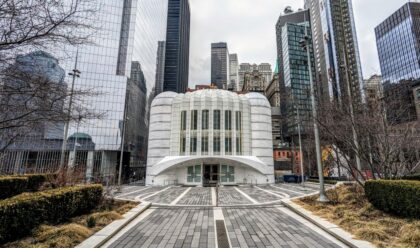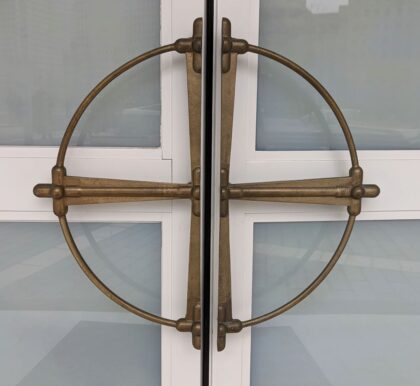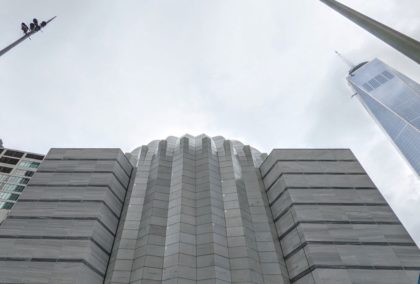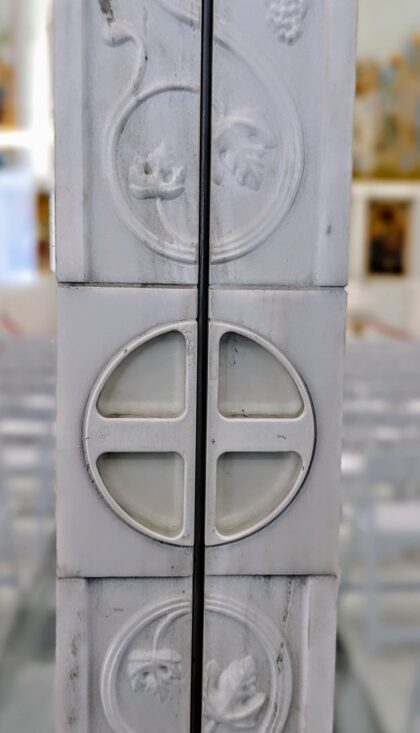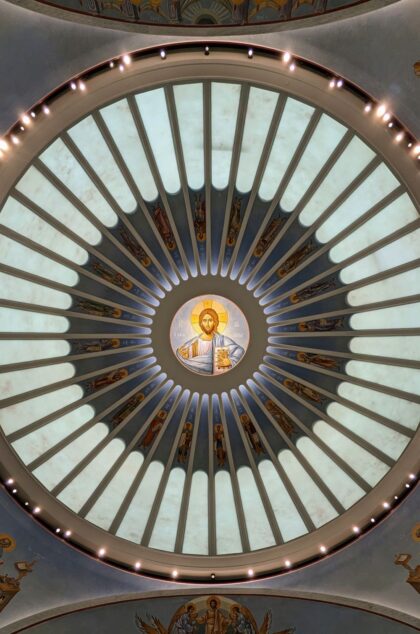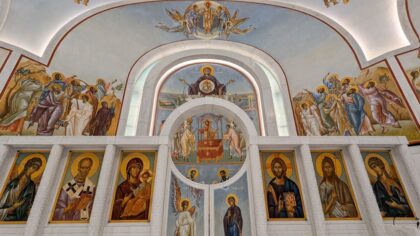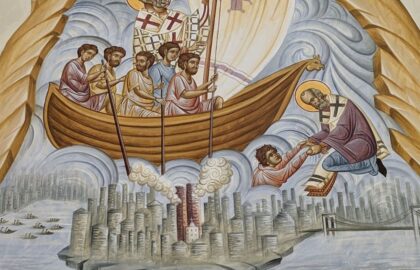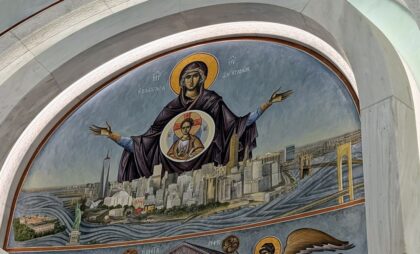New Building Report Card: Saint Nicholas Greek Orthodox Church and National Shrine
Well, there’s no way I am going to nix a church, but even if I wasn’t superstitious, the newly consecrated Saint Nicholas Greek Orthodox Church and National Shrine at the World Trade Center, one of the last pieces of the puzzle that is the World Trade Center, is really quite stunning. The details are what strike me: weathered brass door handles that echo the symbol of the Greek Archdiocese, grapevines carved into the marble columns and of course the white white white of the marble everywhere, from floor to ceiling.
The building in general
The church is on the raised platform that is Liberty Park, on the southside of the World Trade Center and above the truck entrance. It was consecrated on July 4, 2022, and is now open to the public from 10a to 3p every day except Tuesday. The main draw is the sanctuary, but upstairs there’s a bereavement room and offices and there’s a kitchen on the third floor for coffee hour. There are services every week.
The original church was destroyed on 9/11, but it took all 22 years since to get to this point. In 2011, an agreement was struck between the Port Authority and the church to build at 130 Liberty; three years later, Santiago Calatrava, who designed the Oculus, was chosen to design the church. The plan stalled out in 2017 and was revived by a new non-profit; overall $95 million has been raised so far; the construction cost to date is $58 million. (You can read the Price Waterhouse Cooper investigative report on the cost of construction here.)
The original Saint Nicholas Greek Orthodox Church was founded in 1916 in a small row house at 155 Cedar that had been previously used as a tavern. Greek immigrants of Lower Manhattan had purchased it in 1892 as a community home. Over the years, the community of Saint Nicholas resisted attempts to sell the property, and by 2001, the church was encircled by a parking lot in the shadow of the Twin Towers.
The architecture
Calatrava developed his plan from Byzantine precedents, including the Chora Church and the Hagia Sophia Grand Mosque, two Greek Orthodox cultural and historical sites in Istanbul. (Calatrava’s PR firm asked me to add this note: “It is an important distinction for the Orthodox community that Hagia Sophia was a church prior to becoming a mosque. Calatrava’s inspiration came from that church as well as a mosaic of the Virgin Mary housed within.”) The video above is worth watching: it shows how Calatrava’s artistic inspiration for the design emerged from the mosaics of Hagia Sophia and eventually morphs into the current church.
The symmetry is celebrated everywhere, and there’s a tailored element to the building: white and gray marble is arranged in stripes on the columns; the façade is pleated, alternating with glass. At night it glows gold, much like the Perelman PAC on the other side of the memorial plaza. Though again I was corrected on this: the most accurate way to state this is to say the Perelman PAC will glow like Saint Nicholas does. “While the two projects may be similar in their nighttime illumination, it is important to note that the design elements for St. Nicholas were made long before the PAC. Per the PAC website, their design architect started in November 2014 whereas Mr. Calatrava began his design process in 2012.”
The interiors
The interior of the dome is striking, but the real draw is the iconography, some painted on canvas and some directly on the marble. They are the work of master iconographer Father Loukas of Xenophontos and his team of monks from Mount Athos in Greece, who created the iconographic program in the Byzantine style with modern touches. There’s Mary with her arms over the city skyline with the new church in the foreground; the Twin Towers with smoke gushing; images of police and firefighters in the scene of the resurrection with Jesus pulling people out graves.
It’s easy to walk right past the images at first, in the way that you can glaze over in a museum or church. But once you know those references to the site’s history are all there, the experience is so much more interesting — it’s a visual hunt.
(Fun fact: Our docent that day was Marcus Marrero, who, for the purpose of his nametag, was given an honorary S on the end of his name for an added Greek flare.)
Is it an improvement?
Of course. Did it need to be $58 million? Probably not. Is there nostalgia for the scrappy little old church, which held its ground as the World Trade Center was built around it? For sure — and this is the direct opposite, not scrappy or little or old. But with the WTC campus shaping up to be a tour of great 21st Century architecture, this is a perfect addition.
Pass or fail?
This is of course a pass, especially if you are a member of the congregation. But it should be a resource for the community at large, a reflective spot for anyone needing a moment. And its iconography tells the story of what came before.







